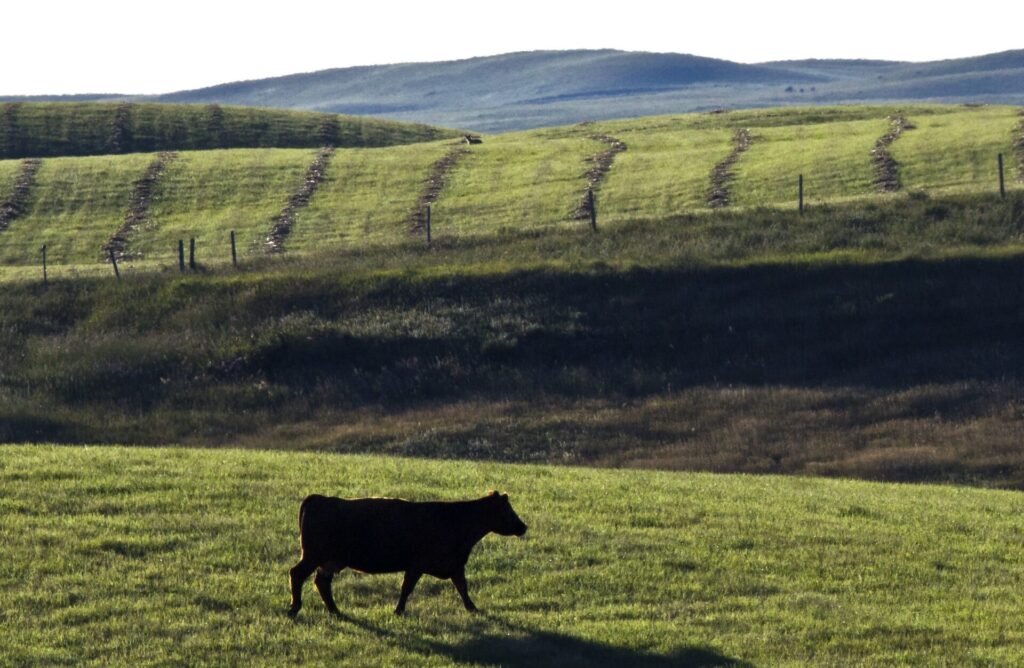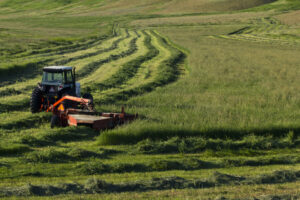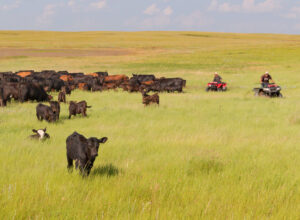Making Money FOR the Farm or FROM the Farm?

Are you making money FOR the farm or FROM the farm?
If you are relying on off-farm income to cover the day-to-day expenses on the farm, you are subsidizing the farm with off-farm income, in other words, making money for the farm.
But what about digging into personal savings to replace machinery when old iron breaks down? Or working for less than what you would pay someone else to do your job? Or being financially better off renting out owned land?
If you answer “yes” to any of the above questions, you may not be covering the total cost of production or being profitable in the long run.
When measuring cost or profits, some producers may only focus on the cash expenses and ignore other non-cash costs such as depreciation, unpaid labour and rent for owned land. These non-cash costs are important elements affecting the longevity of a farm.
Here are some of the non-cash costs to consider:
The Canadian Cow-calf Cost of Production Network estimated that 61% of total production costs were cash costs, 11% were depreciation and the remaining 28% were opportunity costs, based on average of 46 benchmark farms in 2021.
Depreciation

One of the non-cash costs that can significantly impact profitability is depreciation.
Depreciation is the value of an asset that decreases over time due to use, wear and tear or becoming outdated. For example, if the total value of a piece of farm machinery is $100,000 with a depreciation rate at 10% per year, the depreciation cost is $10,000 per year.
From a cost standpoint, tracking depreciation is important because it helps account for the costs of using this asset and allows the operation to replace assets in the future. Ignoring deprecation can result in under-estimating production costs and misleading decision-making. For example, if a farm covers all the cash costs, it may appear to be profitable in the short term. But if it is not covering all the cash costs plus depreciation of buildings, equipment or farm vehicles for multiple years, when these need to be upgraded five or ten years down the road, there may not be enough money generated from the farm business to pay for the investment.
Unpaid Labour
Unpaid labour is usually the labour provided by the farm operator or family members that is not paid. According to the Census of Agriculture 2021, only 7% of beef cattle farms reported employees receiving a wage or salary that were family members.
While many cow-calf operators choose to work on the farm and take only as much as they need to live, estimating the true cost of farm labour is important to determine overall production costs and profitability.

One way to evaluate the value of unpaid labour is to ask: “What would I have to pay someone else to do the job?” For example, if a farm owner values his/her work at $20 per hour and works seven hours a day, six days a week, 50 weeks a year (2,100 hours), the wage they should be getting is $42,000 a year. This doesn’t show up as a cash expense, but if it is not covered, the owner is subsidizing the farm with free or undervalued labour, instead of making money from the farm.
The cost of unpaid labour is often considered the opportunity cost of labour – the money forgone by working on the farm. Another way to estimate this is to ask how much you could earn doing something else. If one could earn $30 per hour working elsewhere, the opportunity cost of labour is $63,000 foregone by not being employed elsewhere. This is a personal choice of where to spend one’s time and should not be counted in the farm’s cost of production, but it should be acknowledged as a personal opportunity cost.
Owned Land
Another important non-cash cost is the rent for owned land. By farming owned land, a producer is forgoing the potential revenue of renting out the land. This can be considered as the opportunity cost of land. For example, if the typical rental rate for the same type of land in the region is $100 per acre, the potential revenue forgone by not renting it out is $100 per acre.
Renting out one’s farmland is not an easy decision. As the market fluctuates from year to year, it might be better financially to rent it out in some years but not over the long term. However, this is a decision that typically cannot be changed from year to year very easily. Often, there are also sentimental reasons behind the decision in addition to economic considerations. With that said, including rent for owned land in production costs is important for measuring the farm’s financial performance and to help when setting goals. If one cannot afford to pay the going rental rate for their region on their owned land constantly, they may need to look for ways to improve production and management to cover those costs.
Another layer of the opportunity cost of land is the potential income from selling the land and investing the money elsewhere. For example, if the market value is $5,000 per acre and one can sell the land and get a 5% return by investing the money elsewhere, the potential income forgone is $250 per acre ($5,000 x 5%). Many producers treat land appreciation as a retirement or investment strategy. Evaluating where that money is best invested for retirement, whether it is in land or elsewhere, can determine if purchasing more land is what is most desirable.
Capital
Like land, there are opportunity costs of cash equity being re-invested in the farm instead of being invested elsewhere.
Over the long run, the opportunity costs from land, labour and capital are supposed to reflect the market value return on investment to your land, labour and capital. When the return to land, labour and capital is equal to or greater than the market value it shows that you are making money from the farm.
Bottom Line
Depreciation and opportunity costs don’t show up as cash costs, but they have significant impact on the viability of the farm. They tell you if you are making money for the farm or from the farm. Getting a grasp on these numbers can help producers better measure farm financial performance, make informed decisions and set goals.
Learn more
- Cost, Profits and What If? The Canadian Cow-Calf Cost of Production Network (BCRC webinar)
- Every Farm Has Different Goalposts – Setting Goals and Defining Success (BCRC post)
- Canadian Cow-Calf Cost of Production Network – 2021 Results (BCRC post)
- Calm and Calculated: What Key Financial Tools Can Help You Achieve Success on Your Farm? (BCRC webinar)
- Understanding Profitability, Iowa State University (Iowa State University)
- Understanding Enterprise Budgets and Economic Profit (Michigan State University)
Le partage ou la réimpression des articles du blog du BCRC est bienvenu et et encouragé. Veuillez mentionner le Conseil de recherche sur les bovins de boucherie, indiquer l’adresse du site web, www.BeefResearch.ca/fr, et nous faire savoir que vous avez choisi de partager l’article en nous envoyant un courriel à l’adresse info@beefresearch.ca.
Vos questions, commentaires et suggestions sont les bienvenus. Contactez-nous directement ou suscitez une discussion publique en publiant vos réflexions ci-dessous.